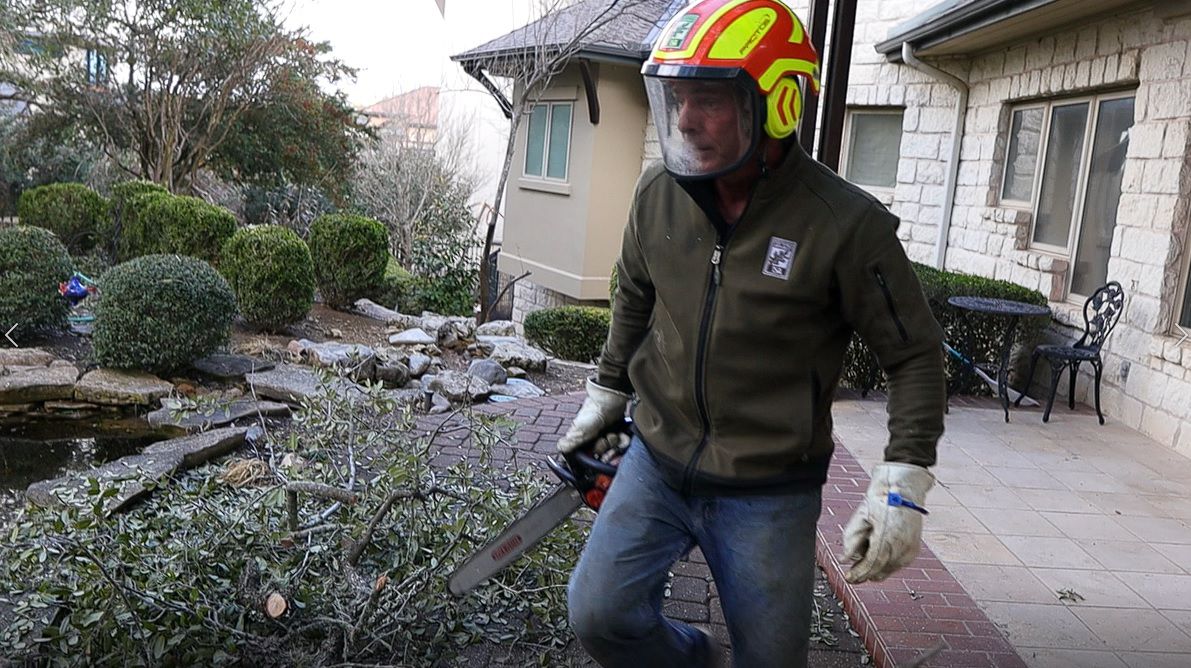AUSTIN, Texas — The sound of chainsaws fill the air in the North Crossing neighborhood southwest of the Loop 1 and U.S. 183 interchange in North Austin.
None of them sound quite like the one being used by Erik Stanley. At least not to him.
“I’ve been waiting to buy a chainsaw for a couple of years and this was the time,” Stanley said proudly.
Stanley jumped at the opportunity to buy his first chainsaw after February's ice storm crippled trees throughout his neighborhood leaving some of his neighbors stranded.
“All of our neighbors have trees down and yesterday we had a big branch down in the middle of the road,” he said.
After removing fallen tree branches from his own home, Stanley walked yard to yard offering to do the same for his neighbors. Neighborhoods across Austin share a similar story. Tree branches cover yards or are stacked on the sidewalks if families have had time to clean up.
Rayward Williamson Jr. runs Ray Williamson Tree Service in Central Texas. The business has been around for five decades and was started by Williamson’s father, a Vietnam veteran.
“I got about a hundred customers waiting on me to get to them,” Williamson said.“It’s been bad in recent years but I haven’t seen it cover the whole city like this. This is probably the worst one I’ve ever seen in my lifetime.”
Williamson Jr. will tell you he’s no lawyer, but he is a certified arborist recognized by the Texas Chapter of the International Society of Arboriculture.
He says major cleanup and potential property damage can be avoided by maintaining any tree on your property. Generally, a property owner has a duty to care for those trees with expectations to prevent injury or damage to a neighbor’s property.
A property owner with knowledge of a damaged or dying tree could be held liable for damages, injury or death caused by that tree.
But if that tree has branches extending over neighboring property lines then that neighbor has a right to trim the branches back as long as it doesn’t cause unduly harm to the tree.

Williamson Jr. says, in his experience, neighbors usually work together. He rarely sees disputes but acts as a mediator when he’s called to clean up a tree spanning two properties or more.
However, an attorney should be consulted if there are ongoing disagreements. It’s best to check with your local municipality to learn to identify protected trees.
Williamson Jr. is confident all that can be handled by a certified arborist like himself and advises calling one after the most recent storm to verify trees still standing are healthy and safe.
“If you do have any hanging limbs up high please just hire a professional to take care of that,” Williamson Jr. said. “It’s a lot safer and keeps everyone else safe who doesn’t have that experience.”



